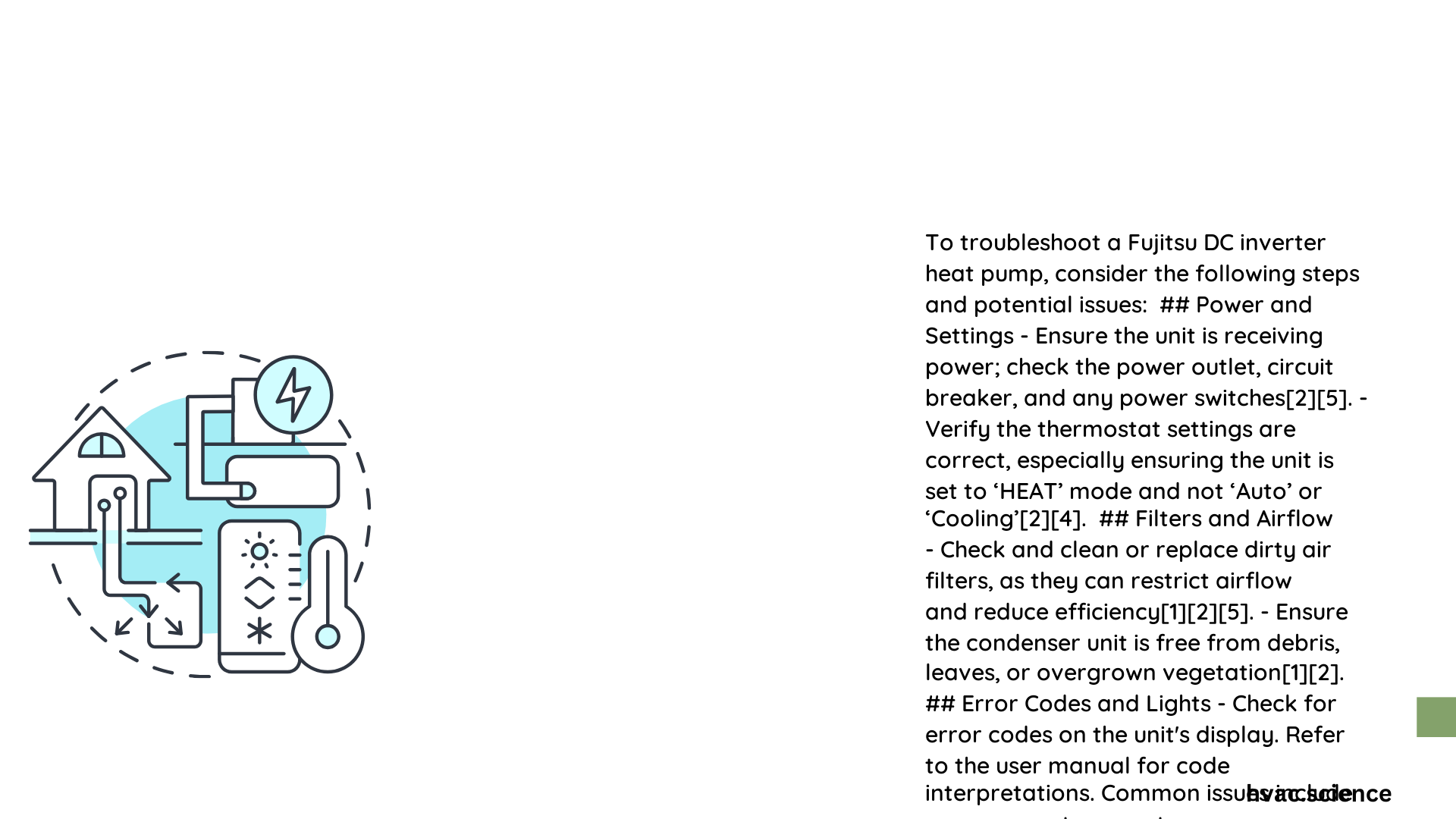Fujitsu DC inverter heat pumps represent sophisticated heating and cooling technology, but like all complex systems, they can encounter operational challenges. This comprehensive troubleshooting guide provides homeowners and technicians with precise diagnostic strategies, error code interpretations, and practical solutions to restore your heat pump’s peak performance, ensuring consistent comfort and energy efficiency.
What Are Common Fujitsu DC Inverter Heat Pump Problems?
Error Code Diagnostics
Fujitsu heat pumps utilize sophisticated error reporting mechanisms to help diagnose potential issues. Understanding these codes is crucial for effective troubleshooting.
| Error Code | Potential Issue | Recommended Action |
|---|---|---|
| EE:EE | System Fault | Reset system, check electrical connections |
| 7-5 Flashes | Pressure Switch Failure | Inspect pressure switch functionality |
| 8-2 Flashes | Compressor Temperature Error | Check compressor sensors and airflow |
| 8-3 Flashes | Active Filter Problem | Clean or replace air filters |
| 8-4 Flashes | PFC Circuit Malfunction | Require professional technical assessment |
Why Does My Heat Pump Stop Heating?
Several critical factors can interrupt heat pump performance:
- Thermostat Configuration
- Verify ‘HEAT’ mode is selected
- Confirm temperature setting exceeds room temperature
-
Check battery status in wireless thermostats
-
Power Supply Issues
- Examine circuit breaker
- Verify electrical connections
-
Test voltage stability
-
Refrigerant Complications
- Low refrigerant levels reduce heating efficiency
- Professional leak detection recommended
- Requires specialized recharging equipment
How to Perform Basic Maintenance?
Filter Cleaning Process
- Remove filters carefully
- Use soft brush or vacuum
- Rinse with lukewarm water
- Allow complete air drying
- Reinstall after 30-45 minutes
Coil Maintenance Techniques
- Disconnect power before cleaning
- Use soft brush to remove debris
- Apply specialized coil cleaner
- Rinse gently with low-pressure water
- Allow complete drying before reconnection
What Signals Require Professional Intervention?
Critical signs necessitating expert assessment include:
– Persistent error codes
– Unusual mechanical noises
– Significant performance degradation
– Visible refrigerant leaks
– Electrical component failures
Technical Specifications to Monitor
Operational Parameters
– Discharge Temperature: 50°C – 70°C
– Suction Temperature: -3°C – 4°C
– Recommended Ambient Range: -15°C to 40°C
Prevention Strategies
- Schedule bi-annual professional inspections
- Replace filters quarterly
- Maintain clear outdoor unit surroundings
- Monitor system performance consistently
- Address minor issues promptly
Electrical Troubleshooting Checklist
- [ ] Verify power supply
- [ ] Check circuit breaker
- [ ] Inspect wiring connections
- [ ] Test voltage stability
- [ ] Examine control board functionality
Conclusion

Effective Fujitsu DC inverter heat pump troubleshooting requires systematic approach, technical understanding, and timely intervention. While basic maintenance can resolve many issues, complex problems demand professional expertise.
